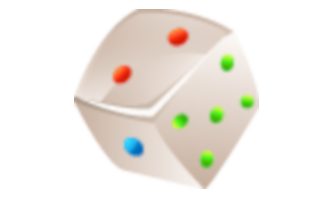Chemical bonding
Science, Grade 6
Chemical bonding
Study Guide

Chemical bonding
Flash Cards

Chemical bonding
Quiz

Chemical bonding
Worksheets

Chemical bonding
Games

Study Guide Chemical bonding Science, Grade 6
❮
1
/
2
❯
CHEMICAL BONDING Chemical bonding involves only an atom’s outermost electrons. These electrons are called valence electrons and because they have more energy than other electrons, they tend to be found further away from the nucleus. Since the valence electrons are the atom’s most important electrons, electron dot diagrams are drawn to show them. Lesson Checkpoint: What are valence electrons? Achieving Stability Individual atoms seek stability. This occurs when the outermost orbit or energy level has eight electrons. Hydrogen only needs two to be stable. The reason the noble gases are stable is because they already have eight valence electrons. For all other atoms, bonding is necessary to achieve this stability. This is done is one of two ways: • Ionic bonding occurs when one atom gives up its valence electrons to another. In doing so, both atoms wind up with the eight electrons needed. For example, in the electron dot diagram below Sodium (Na) has one valence electron and Chlorine(Cl) has seven. When sodium gives this electron to chlorine it now has eight outer electrons and chlorine, which had seven, now has eight. An ionic bond forms. The result of this bond is an ionic compound. Ions are electrically charged atoms and, in this case, Na having given up one electron becomes positively charged and Cl, now having an extra electron, becomes negatively charged. The force of attraction between these two ions creates the bond. Lesson Checkpoint: What is an ionic bond? © Copyright NewPath Learning. All Rights Reserved. Permission is granted for the purchaser to print copies for non-commercial educational purposes only. Visit us at www.NewPathLearning.com.
• The second type of bonding is called covalent bonding. With this bond, atoms do not transfer their valence electrons but, instead, a sharing of valence electrons takes place. If you look at the electron dot diagram below, Hydrogen needs to get two electrons to bond and Oxygen needs eight. To achieve this, each Hydrogen atom shares one electron with Oxygen and Oxygen, in turn, shares one of its valence electrons with each Hydrogen atom. The result is the formation of a water molecule. A molecule forms when covalent bonds are used. LESSON CHECKPOINT: How does a covalent bond form and what is the term for the chemical combination? Active metal atoms like Sodium(Na) are tightly held together by metallic bonds. Because active metals so easily give up their valence electrons, when several of these atoms come together the atoms become positively charged ions and their valence electrons float around between them. This creates a great force of attraction between all the atoms. Because of metallic bonds, metals are hard, malleable, conduct heat and electricity very well, and have high luster or shine. LESSON CHECKPOINT: What are metallic bonds and what properties do they give to metal atoms? © Copyright NewPath Learning. All Rights Reserved. Permission is granted for the purchaser to print copies for non-commercial educational purposes only. Visit us at www.NewPathLearning.com.
